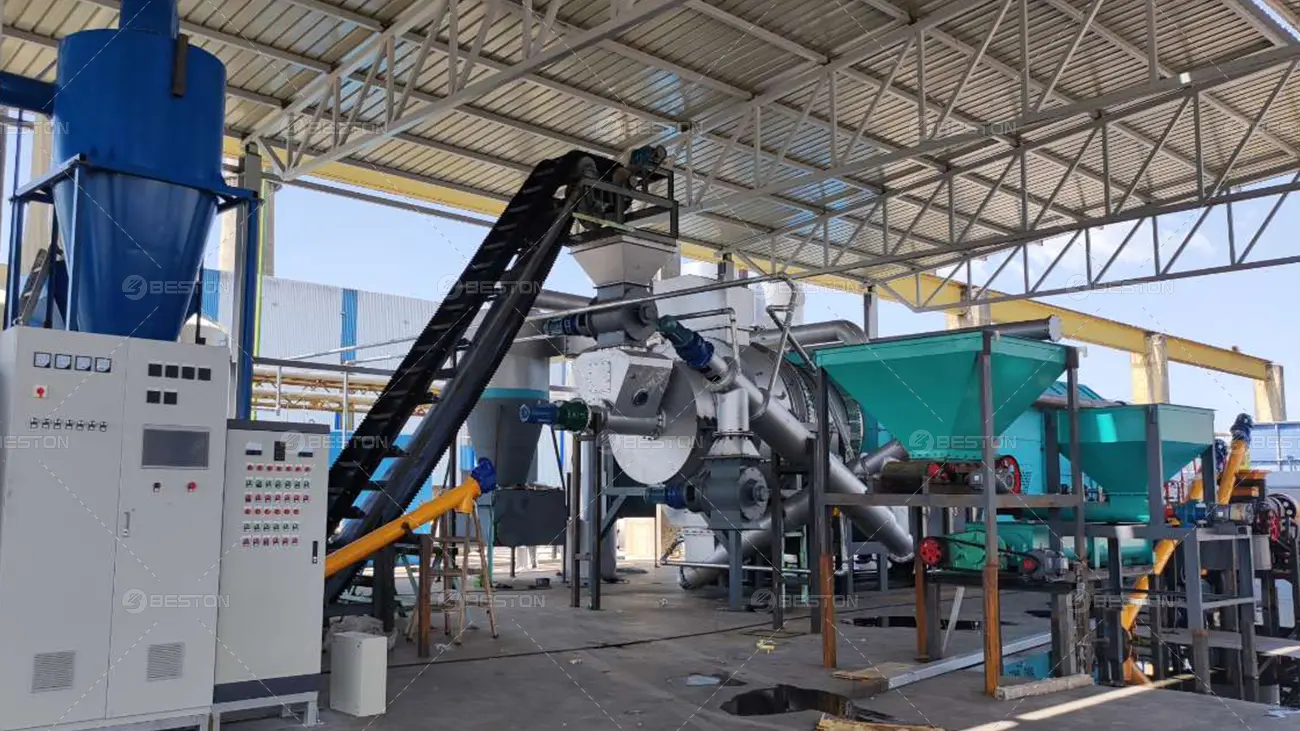Wood-derived biomass has long been regarded as a premium input material in thermal conversion systems due to its inherent structural, chemical, and thermal properties. When processed through a pyrolysis plant, wood not only yields high-quality biochar but also ensures operational stability, predictable outputs, and broader application potential in carbon management, agriculture, and materials science.
Wood consists predominantly of cellulose, hemicellulose, and lignin—three polymers that contribute to high fixed carbon content upon thermal decomposition. Under controlled wood pyrolysis plant conditions, this leads to biochar with elevated aromatic carbon concentrations, which enhances both stability and durability in soil.
The resulting carbonaceous matrix has a low H/C molar ratio and a highly condensed structure, making it resistant to microbial degradation. This renders wood-derived biochar ideal for long-term carbon sequestration projects. In carbon credit generation schemes, such material often qualifies for premium categorization due to its high permanence.
Unlike many agricultural residues that contain significant mineral content, wood has minimal inorganic impurities. This characteristic results in low ash formation during pyrolysis, typically less than 1.5%. Low ash content enhances reactor efficiency, minimizes fouling, and reduces post-process filtration or scrubbing requirements.
The homogeneity of wood feedstock also ensures consistent pore development in the final char product. Uniform pore distribution is critical for applications in water purification, microbial colonization in soils, and activated carbon manufacturing. In contrast, non-woody biomass often yields heterogeneous char with variable porosity.

In continuous-mode biochar production equipment configurations, wood exhibits predictable thermal degradation behavior. Its decomposition follows a well-characterized kinetic profile with narrow peak temperature ranges for volatilization. This allows for precise process control, reduced energy fluctuation, and improved product yield forecasting.
Wood's relatively low moisture content (especially after pre-drying) and high energy density contribute to efficient energy recovery. The syngas produced from wood pyrolysis tends to have a balanced composition—suitable for combustion, turbine integration, or fuel upgrading. The absence of resinous or corrosive volatiles minimizes the risk of reactor damage or clogging, particularly in screw-conveyor and rotary kiln systems.
Biochar derived from wood possesses superior physicochemical attributes for various industrial and environmental uses. In agronomy, its high cation exchange capacity (CEC), low bulk density, and stable surface chemistry improve nutrient retention, water holding, and microbial habitat development. This is especially relevant for sandy or degraded soils.
In environmental engineering, wood biochar acts as a highly effective sorbent. Due to its micro- and meso-porous structure, it can immobilize heavy metals, organic contaminants, and volatile compounds. When further activated, it becomes a viable substitute for commercial-grade activated carbon.
Moreover, its predictable surface chemistry allows for easy functionalization in advanced material applications. Researchers have utilized wood biochar as a matrix in composites, battery anodes, and construction additives, capitalizing on its tensile resilience and chemical inertness.
Forestry waste, sawmill residues, and tree trimmings are widely available in many regions with mature timber industries. This ensures a stable supply chain with limited seasonality. Moreover, wood feedstock is easy to process—requiring standard size reduction via chipper or shredder—and poses minimal risk of contamination compared to municipal or food waste streams.
The consistent particle size and moisture characteristics simplify feed system design and reduce maintenance intervals for pyrolysis reactors. In large-scale applications, this translates into lower operating costs and fewer unplanned downtimes.
Utilizing wood waste in a pyrolysis plant supports closed-loop systems. It diverts biomass that would otherwise decay or be incinerated, preventing the release of CO₂ and methane. Instead, the carbon is immobilized in a stable form, enabling integration into carbon-negative value chains.
Incorporating wood biochar into circular material flows—whether as a soil amendment, filtration media, or industrial additive—reinforces the decarbonization of traditional sectors. The process complements afforestation and reforestation strategies, providing an end-of-life solution for tree biomass that aligns with sustainability targets.